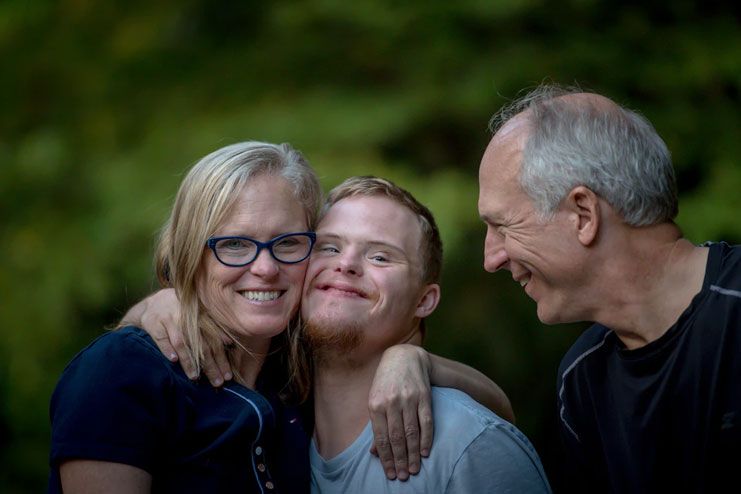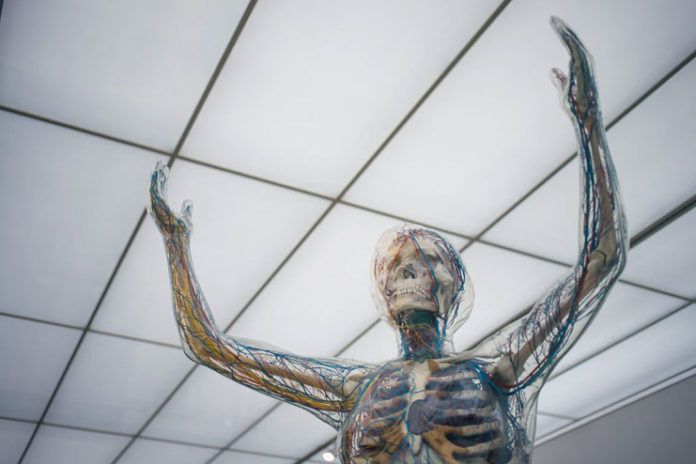Affiliate Disclaimer
Some links in this article are affiliate links. We may earn a small commission if you make a purchase through these links, at no extra cost to you. We only recommend products we find useful to our readersTactile defensiveness is a reaction to the environmental approaches to one’s body. It can be because of genetic reasons, hereditary, or because of lifestyle choices. For example, Tactile defensiveness can be described as an aversion to touch, the reaction can be over-responsive or under-responsive- it depends on individual to individual.
Touch, hearing, smelling are responses gathered through evolutionary processes of millions of years which are stored in our unconscious and we act mostly according to social norms that are acceptable. But sometimes, the reaction can be signs of tactile defensiveness.
There are various types of tactile defensiveness and different causes too. Tactile defensiveness activities include, touch sensitivity to certain kinds of clothes-for example- hypersensitivity to polyester than cotton. One with such a condition may say “no, I don’t want to wear this because it is polyester and makes my skin itch”. A progressively tactile defensive person, on borderline tactile system dysfunction, may react with horror, and hide themselves in a room or curl themselves up into a ball on a sofa when they think about wearing the polyester dress.
Tactile sensitivity develops in children and if the responses are growing towards some kind of disorder or hyper-reactions then there are treatments for tactile defensiveness. Different kinds of tactile defensiveness include:
Pattern 1: Sensory Modulation Disorder
- Over-Responsive Sensory
- Under-Responsive Sensory
- Craving Sensory
Pattern 2: Sensory-Based Motor Disorder
- Postural Disorder
- Dyspraxia
Pattern 3: Sensory Discrimination Disorder
- Sensory characteristics
- Sensory differences and similarities
Below are some examples of causes, effects and treatments of tactile defensiveness. Progressive tactile defensiveness
What is tactile defensiveness or Touch Sensitivity?

The theory of sensory integration suggests that tactile hypersensitivity occurs because the brain pays too much attention to light touch and protective sensations from the skin. Tactile sensitivity can be detected through tactile defensiveness in children or adults who get irritated with different kinds of clothes because of its fabric or different types of foods, because it is either too creamy or too smooth. They often reiterate these problems consistently, even though there is nothing harmful in these foods.
Tactile defensiveness or touch sensitivity is not a formal diagnosis given by any doctor by symptoms and signs can be observed by family members of friends or by self evaluation. In this case reaching out and explaining your problem to an occupation therapist will be most helpful.
What are the causes for tactile defensiveness?

7 causes of Tactile Defensiveness
1. CHARGE Syndrome:
Multisensory impairment because of the brain’s neural network’s malformations which may or may not be detected at an early age is a syndrome when the body’s tactile system is compromised. When we are touched our somatosensory nerves are activated and it sends information to the brain for response. It is a rare genetic syndrome occurring in 1:10,000 or 1:15,000 births in the world. CHARGE (coloboma, heart defects, atresia choanae) brain leads to various physical abnormalities in choanal atresia/stenosis, coloboma and cranial nerve anomalies.
2. Autism Spectrum Disorder:
Autism is used when we are referring to the autistic patient. However, autism spectrum disorder consists of a range of conditions including, Autism Spectrum, Autism Spectrum Condition, Asperger Syndrome, “Aspie,” High Functioning Autism and Pervasive Developmental Disorder.
According to scientists, MECP2 (a gene that helps normal function of MECP2) is deficient in autistic people which causes abnormal function of nerve cells and reduced expression of UBE3A (ubiquitin protein ligase E3A) and GABRB3 (Gamma-Aminobutyric Acid Type A Receptor Subunit Beta3). They are found in the cerebral cortex, hippocampus, cerebellum, thalamus, olivary body and piriform cortex of the brain. Lack in productivity of these can lead to neuro-developmental disorders.
Tactile defensiveness is common in Autism spectrum disorder. The person who is autistic often responds to his/her hyper-sensitively or non-responsive to touch. It occurs due to a range of genetic factors and twins are more to autism research has shown. Some who are extremely low in touch cannot feel any pain in certain regions of their body.
3. Altered cortico-hippocampal connectivity:
This condition can occur due to genetic causes and also because of physical trauma or drugs’ abuse. Cortico-hippocampal connectivity varies in individuals. The stronger the network, means a stronger response to memory senses. The neurons carry touch or hearing information through the Plasma membrane monoamine transporter (PMAT) regions of the brain which holds together the event-specific information. And hence, the specific reaction to it. If there is a problem in the cortico-hippocampal connectivity, the person may be responding poorly to information from external sources, like touch, as he or she is not able to process this information like normal people. This can cause tactile defensiveness in the person, and also may exhibit psychotic responses.
4. Obsessive Compulsive Disorder (OCD):
High sensitivity or decreased sensitivity to pain are genomic sister disorders of OCD. For example, Smith-Magnesis Syndrome (SMS) is one of the associated genetic disorders associated with OCD in which the person exhibits decreased eye contact, motor mannerisms and poor sensory outputs. This is because of the malfunctioning of the cells in the Chromosome 17 regions. There are other major associated disorders like Velocardiofacial syndrome, Idiopathic schizophrenia, Dyslexia etc. Sensory over-responsivity is a characteristic of OCD patients. Research is still ongoing on what causes these specific gene abnormalities.
5. Fragile X Syndrome:
In this the tactile defensiveness is associated with delayed response, use of isolated words to express emotions, and show oral dyspraxia (oral motor dysfunction). Mutations generally occur due to mistakes when the DNA is copied or as the result of environmental factors such as UV light and cigarette smoke.
This condition occurs because of genetic mutations in SYNGAP1. SYNGAP1 is a negative regulator of Ras, Rap and of AMPA receptors involved in cell growth, differentiation and survival. The AMPA receptor mediates fast synaptic transmission in the central nervous system (CNS) trafficking to the postsynaptic membrane, thereby regulating not only synaptic plasticity (communication between two neurons), but also neuronal homeostasis (maintenance of electrical activity).
According to the National Organisation of Rare Disorders (NORD) it is a common disorder and can occur (3 to 4% of the world population) in children and adults and is the cause of non-syndromic intellectual disability (NSID). This intellectual disability is present in Down syndrome, Fragile X syndrome and Tuberous sclerosis complex. This causes speech repetition and suppression.
6. Phelan-McDermid Syndrome:
Speech delays and behavioural problems in responding are common signs of Phelan-McDermid Syndrome. It is a genetic disorder which occurs because of the loss of a small piece of chromosome 22. Deletion syndrome such as this is inherited in an autosomal dominant pattern , which means one copy of the altered chromosome in each cell is sufficient to cause the disorder.
The loss of the chromosome 22 in the 22q13 region causes the mutation of the SHANK3 gene. This gene plays a very important role in the protein production and continues synapses that regulate neural communication. SHANK3 gene is found in many of the body’s tissues-mostly abundant in the brain.
7. GH Deficiency:
There is no clear cause of Growth Hormone (GH) deficiency. This hormone is produced in the pituitary gland in the brain. Sometimes, there is no pituitary gland or sometimes the gland produces less growth hormone than required for the body to function. One of the main symptoms of GH deficiency is Greater sensitivity to heat and cold.
Because of below average growth, they also suffer from tactile deficiency for example in Turner Syndrome, patients don’t feel touch at all. GH deficiency can also be inherited from the mother during the postnatal development stage. It causes thermal hypersensitivity in children.
GH injections are given to children and adults. Other than this, healthy living, a balanced diet and exercise are essential to prevent and reduce these risks attached.
How can I find whether my child or person is suffering from tactile defensiveness?

The main disadvantage of not being able to process somatosensory information because of various reasons. Because of which they harbour a different style of expressing emotions which we call symptoms or signs of tactile defensiveness. It can take years to understand the person’s needs and objectives who have such a problem.
Symptoms of tactile defensiveness?

Tactile defensiveness or sensitivity can enthuse a range of reactions because of hypersensitivity or lower than normal sensitivity. This is possible to detect in case the child or the person is not reacting in a conversation or overreacting or is paranoid by usual day-to-day activities.
It is important to detect these signals because it can be prevented in children and brought under control. Around 75% of cases see improvement in tactile sensitivity and tactile defensiveness over the years
1.Touch:
Children and adults with tactile defensiveness due to any causes exhibit irritation or defensiveness against certain touch senses. For example, hair brushing, cloth fabric and food texture etc.
2.Smell:
People with Sensory Processing Disorder (SPD) can report smell sensitivities. Tactile defensiveness in this case can feel very suffocating. This can occur from body odours, Detergents and sometimes, odours that others cannot even detect. This can affect their workday as they get distracted continuously.
3.Hearing:
Tactile defensiveness can occur from being sensitive to sound. Specifically high frequency sounds, low-frequency sounds, or both high and low-frequency sounds.
4.Speech Motor Control:
Oral motor difficulties can lead to the person misinterpreting everyday sensory information. They are also hypersensitive not only to various food properties. They mostly cannot fathom smell, sound or words.
5. Inattention:
This is a common symptom as tactile defensiveness and tactile sensitivity occurs in people with OCD and Attention Deficit Hyperactivity Disorder (ADHD). Children with ADHD show worse performance in tasks that require higher attentional load (reaction time task with and without a choice component and when “distracted” by a carrier stimulus in the temporal order judgment task.
6.Hyperactivity:
The person is hypersensitive to things that touch their skin. They are impulsive and cranky. They deviate from subject to subject in the same conversation without realising. There is also an increased presence of impulsive and off-task and hypermotoric behavior. Sometimes there is delay in responses.
7. Gastrointestinal Symptoms:
Hypersensitivity can also lead to gastrointestinal disorders. The person with tactile sensitivity has altered reflex activity and altered conscious perception. Because of motor nerves dysfunction and stimulation of tension receptors they can cause visceral motility disturbances.
How can we help a person suffering from tactile defensiveness?

Also they may suffer from low self-esteem, anxiety and depression because of this. And they need special care and attention and even clinical help is required. Below are 10 ways to help people suffering from tactile defensiveness.
Top 10 Ways to Treat Tactile Defensiveness?
1. Monitoring Sleep:
A good night’s sleep will ensure improvement in the condition of tactile sensitivity in the person. A tactile defensive person has to be catered to in various ways so they can sleep better. It will avoid overstimulation because of myriad reasons like sounds and bedsheets. He or she may even fall down from the bed if they don’t sense where they are touching the end of the bed.
A guardian, parents or caretaker should be around such a person till they fall asleep. Make a note of things they are sensitive towards and make sure there is none of it from before 2 ½ hours before bedtime. This will allow for digestion, start the quiet bedtime routine and help transition to the calm sleep.
2. Occupational Therapy Assessment:
Tactile defensiveness can cause anxiety if the person or child is aware they are having this problem and it is not normal. Pharmacological and psychological interventions do help in treating sensory defensiveness. The main constraint or rather deterrent is the idea of “sensory integration” which most occupational therapists use in their methods.
The idea is to not focus on the “learning disabilities”, relate it to “mental health” or “syndromes”. Research shows regular daily sensory input and participating in activities of their choice that provided primarily tactile, vestibular and proprioceptive input from their side. The participants in the research end up describing their responses to sensory perceptions, self-care, environmental sensory distractions (that is, noise, light or movement), sensory based interpersonal problems (that is, tolerance of touching) and coping strategies in relation to sensory perceptions.
3. Touch Inventory:
A touch inventory is a classroom where certain assessment tools are used by a team of experts, including elementary school teachers, doctors, parents and therapists. They use a theoretical rationale related to sensory integration dysfunction to engage the kids having tactile defensiveness. It is a 26-item tool which is a questionnaire used with children who report or inform the querent.
It comprises questions like Does it bother the child to be approached from behind?. Does it bother the child to be kissed? and Does it bother the child to play games with his/her bare feet?
Independent samples of questionnaires can be used for long-term tactical defensiveness to understand their issues and report on development through maturation.
4. Correct Functional Dystonia:
Tactile Defensiveness because of functional movement disorders experience a mix of motor symptoms including dystonia, tremor, myoclonus, gait disorders, and tics.
The best treatment for functional dystonia correction is a three-tiered approach: botulinum toxin (botox) injections. Surgery, medications and botox can both help block the communication between the nerve and the muscle and may lessen abnormal movements and postures the person tends to make due to tactile defensiveness.
Many times, Transcranial Magnetic Stimulation (TMS) also works. This takes about 30-40 minutes and is practiced by experts. It is a non-invasive electroconvulsive therapy. A device is placed at a distance-about 2-5 inches above your head. And wire ends are stuck to your hands. Electricity passes through the wires into the body making the person stable.
5. Psychotherapy:
It is important for counsellors to educate their clients about their sensory defensiveness and not treat them under an umbrella term in the Diagnostic and Statistical Manual of Disorders (DSM). It is important to engage with them, independently.
Instead of going into the root cause or trying to make them articulate the problem. The counsellors room can become a place where parents or family members can learn deep skin brushing technique, how to do proprioceptive input into the clients joints, exercises for his or her balance system and learn about therapeutic listening. This with a combination with cranial-sacral therapy is bound to help the client.
Counseling is the best way to treat sensory defensiveness. New and inventive ways have come about. We just have to be more open minded to use new techniques and sensitive towards the issue the client is facing.
6. Visual pedagogy:
A tactile defensiveness patient has a good visual perception. It is one of the most familiar and commonly understood. Provide visual cues to the child or the person about feeding sessions just before gastrostomy feedings. In addition, treatment activities should be supported by visual boards and auditory experience to record sensitivity.
The visual boards can display schedules for tasks that must be completed such as tooth brushing or hair brushing.
7. Cochlear Implants:
These are external auditory devices used to modulate noise and they also be used to fix variable sound as per need of the tactile defensiveness problem of the person or child.
Research shows the “effective” dynamic range variability allows better formance. a cochlear implant listener is even more attentive and comfortable after he learns to use this machine. It can be set to his or her needs.
8. GABA tea:
GABA tea was discovered in Japan in the 80s at Japanese National Institute of Advanced Food Research. It has the strongest hypotensive effect which is good for sensory disturbances. GABA tea is 50 times more effective in treating gastrointestinal problems in tactile defensiveness persons. It has theanine and alanine which helps with curing insomnia and stress.
9. Yoga:
A healthy balanced diet and exercise is the most important thing which must be practiced to make life as usual for the tactile defensive person. Take your child out to play, join Yoga sessions with a group.
Yoga enhances motor abilities, brings emotional stability and integrates self-regulation in daily life. People with tactical defensiveness can also adopt yoga as a skill.
10. Mirror Exposure Therapy:
During any therapy session or even at home, mirror exposure therapy which is now in the cognitive behaviour therapy (CBT) manual for psychotherapists is useful. Place a mirror opposite to the person with tactile defensiveness and let him experience his posture, reactions and self-presentation.
The idea behind mirror exposure therapy is to bring out the person’s self-focused attention. This can have negative and positive reactions and the therapists can work on the signs and symptoms of individual patients better.
Conclusion
Tactile defensiveness causes, symptoms and treatments given in this article are from the latest research available.The life of a person with tactical defensiveness or tactile sensitivity has a fault in his neural structure because of which certain hormones don’t work and help in gathering adequate information for proper and normal responses to external environmental activities, like touching, talking, hearing. This can be very heavy on the person or child and even their family members. It is important to educate ourselves about the little things persons with tactile defensiveness can teach us.































